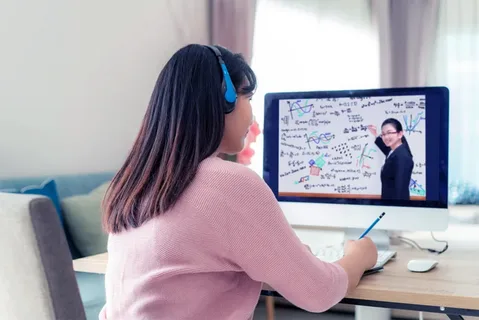How to Communicate Effectively in Online Courses
Effective communication is key to success in online courses, as it fosters understanding, collaboration, and engagement. With the rise of online learning, students must adapt to virtual tools and written communication to stay connected with instructors and peers. Unlike traditional classrooms, online learning environments often rely on virtual tools and written communication, making it essential to develop strong digital communication skills. In this article, we will explore how to communicate effectively in online courses.
Understand the Communication Tools
Understanding the communication tools available is the first step in learning to communicate effectively in online courses. Today, most online courses are supplemented with learning management systems (LMS), such as Zoom’s Communication Tools, which provide many tools for interaction, including discussion boards, email, chat functions, and video conferencing platforms. Additionally, platforms like the Canvas Learning Management System offer a range of features designed to enhance your online learning experience. Familiarize yourself with the specific tools your course provides so you can participate fully.
The platform functions vary based on how many people you would like to chat or meet, such as group chats, private or public chats, etc. Knowing how to use these tools well will make communicating and staying engaged with the course material and discussion easier.
Written Communication Should Be Clear And Concise
A lot of the communication in online courses runs through written messages, like emails, discussion boards, and messaging — so be clear and concise. Unlike face-to-face communication, written messages cannot provide nonverbal clues such as Tone of voice or body language, which would have been present in the same communication transmitted through face-to-face communication, resulting in us getting in the wrong place. To speak in online courses, speak clearly and precisely about your thoughts.
When you discuss or send emails, be sure to write messages that are easy to understand so that your messages include only simple sentences. In organizing your thoughts, start with the basics, such as logical breakdowns in short paragraphs. Not only does this make your communication clearer, but it also helps others follow your ideas more easily.
Be professional and respectful.
Being professional and respectful in online classes is also part of communication in effective online courses. Much of the online learning happens in public forums or group discussions; it’s important to communicate respectfully, even if you disagree with someone’s point of view. In a true virtual classroom setting, treat your instructors and peers as you would in a traditional classroom setting.
Instructors expect formal language and correct grammar, especially in emails and messages, and address them with formal language. Don’t use slang, abbreviations, or informal style unless appropriate. Using proper language in your communication shows you are also professional, creating a good learning environment.
Take Part in the Discussions Activity
Personal communication in online courses is important and requires us to actively participate in discussions. Most of the time, you are engaged with your peers and instructors through online discussions, which means your contributions enable collaborative learning. So feel free to share your ideas, ask questions, or provide feedback in the discussions. Participating actively also reinforces good habits, much like following Effective Study Habits for High School Students to stay organized and focused in your learning.
When participating, make sure you respond thoughtfully and relevantly to the topic. When participating, respond thoughtfully and stay on topic. Additionally, when replying to others, offer insights or ask follow-up questions to show engagement. Participation is consistent and helps express the learning process and your actual commitment to the learning.
Use Proper Netiquette
In other words, netiquette is a set of rules dictating how to behave effectively in online spaces. Learning how to communicate in online courses is learning netiquette rules. It means avoiding shouting with all caps, being polite in your writing, and thinking about perspectives.
It also inspired me to time emails and messages by being answered promptly. Prompt communication is important for instructors and peers to feel that the course is still flowing smoothly, so responding promptly is a sign of respect and engagement. The more positive and productive experience of online learning that we all contribute to, the more we follow netiquette rules.
Ask Questions When in Doubt
One of the key elements of effective communication in online courses is asking questions when you need clarification. Since you may not have immediate access to your instructor as you would in a physical classroom, it’s essential to take the initiative and ask questions whenever you’re unsure about assignments, course material, or deadlines.
Don’t hesitate to reach out to your instructor via email or discussion boards for clarification. Clear communication ensures that you fully understand the expectations of the course and prevents potential confusion or mistakes. Asking questions not only benefits you but can also help others who may have similar concerns.
Build Relationships with Peers and Instructors
Building relationships with your peers and instructors is another critical aspect of communicating effectively in online courses. While online learning environments may seem less personal, it’s still possible to create meaningful connections through communication. Engaging in discussions, joining group projects, and attending virtual office hours are great ways to connect with others.
When you actively communicate with your peers and instructors, you foster a sense of community and support within the course. These relationships can lead to collaboration on assignments, study groups, or simply a more enjoyable learning experience. Strong communication helps bridge the gap between online and traditional learning environments.
Use Visual and Multimedia Elements Wisely
In many online courses, you may have the opportunity to use visual and multimedia elements to enhance your communication. This could include sharing presentations, videos, or images to explain a concept or provide feedback. Learning how to communicate effectively in online courses means knowing when and how to incorporate these elements to support your message.
For example, when working on group projects, you can use video conferencing tools to present your ideas in real-time or share visual aids during discussions. Using multimedia elements adds variety to your communication and can help make complex topics easier to understand. Just be sure that any visuals or multimedia you use are relevant and support the overall learning objectives.
Conclusion
Communicating effectively in online courses is essential for success in a virtual learning environment. Understanding the available communication tools, being clear and concise, and maintaining professionalism are key to effective online communication. Actively participating in discussions, using proper netiquette, and asking questions when needed will help you stay engaged and connected with both instructors and peers. Additionally, building relationships and wisely incorporating visual elements can further enhance your online learning experience. By mastering these communication strategies, you can maximize your success in any online course.




